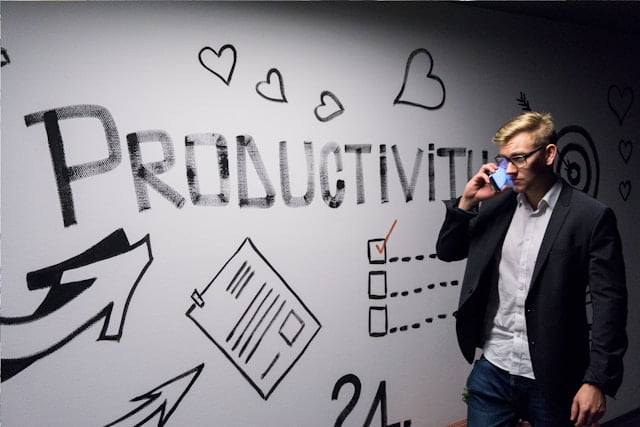There are two main types of innovation: initial and incremental innovation. Initial innovation is sometimes referred to as disruption or primary innovation. It is when something radically new is introduced to the world. Incremental innovation is when something that already exists is made better.
Summary by The World of Work Project
Initial and Incremental Innovation
There is often a fair bit of confusion in the common understanding of exactly what innovation is. In reality, part of this confusion comes about because there are actually two different types of innovation. These types are known as Primary Innovation and Incremental Innovation, though they are both also known by many other names.

Initial Innovation (Primary Innovation)
Primary innovation is the the more glamorous of the innovations. It’s what people sometimes refer to as disruption, or radical innovation. It normally appears creative and inspired, and the impacts of primary innovation often result in the creation of new fields or products.
It’s called primary innovation as it usually results in the first, or primary, time that a totally new product, design-type or idea is brought into the world, and it’s these new items that typically disrupt historic, established industries, value networks and marketplaces and which can force obsolescence (See our post on Disruption in Action for further insights into this process).
From a theoretical or investment perspective, primary innovation can be thought of as having high risks and associated returns as well as leading to large technological progress and market impacts when successful.
Examples of products that represent primary innovations and which have disrupted the world include: the Telegraph, production lines, computers, combustion, catalogue sales, AI / machine learning / RPA, the internet, steel, the printing-press and MP3s.
Incremental Innovation
Incremental innovation is the less glamorous of the innovations. It doesn’t bring new ideas and products into the world instead, as its name suggests, it incrementally improves existing products. Where primary innovation is seen as creative and inspired, incremental innovation is seen more as arduous and effortful.
While it’s not always easy for consumers to pinpoint examples of incremental innovation, we experience their benefits throughout our lives. Things like improved battery life, improved automobile safety standards, reduced laptop-weight, reduced sugar breakfast cereals, more energy efficient washing machines and safer building sites may all be examples of incremental innovations of either products or processes.
From a theoretical or investment perspective, incremental innovation can be thought of as fairly low risk, with commensurately fairly low returns. The incremental nature of these innovations often results in low levels of technological process and minimal market impacts.
Though less glamorous in many ways, incremental innovation is hugely important in the world and individuals and organizations often spend considerable amounts of time and effort to achieve it. The types of activities that lead to incremental innovation include: end-to-end transformations, Kaizen thinking, lean process improvement, AB-testing, hackathons, product development workshops, value stream improvements and black-box thinking and the focus on marginal gains.
Learning More
It’s worth reading more about the Innovator’s Dilemma. We also like the concept of the Medici Effect, which considers the benefits of diversity on innovation. We’ve written a little on cultures and leadership for innovation and discussed the hackathon tool, as well as problem solving. We’ve also tried to look at what disruption in action looks like. To be honest, we don’t like the way the phrase disruption is used as something to aspire towards, but understand it’s out there…
You might also enjoy the three special podcasts we did on creativity and innovation with Roni Reiter-Palmon, who’s the director of innovation at the University of Nebraska’s Center for Collaboration Science. You can listen to the first episode below:
The World of Work Project View
There’s not too much more to say about Initial and Incremental Innovation. Primary innovation is the exciting one that gets all the attention, but incremental innovation does a huge amount to make our lives better. We need both to keep making the world a better place.
It’s perhaps worth noting at this stage, though, that with products that we consider to be highly innovative, for example the iPhone, a lot of the actual innovation work behind them was completed by government bodies and the military. The “innovation” that we think of and which organizations like Apple do, is combining existing technologies in a helpful way. In the case of the iPhone, something like 90% of the technologies that were required for the phone were developed elsewhere. This is no way detracts from the innovative nature of companies like Apple, it’s just worth being aware of.
How We Help Organizations
We provide leadership development programmes and consulting services to clients around the world to help them become high performing organizations that are great places to work. We receive great feedback, build meaningful and lasting relationships and provide reduced cost services where price is a barrier.
Learning more about who we are and what we do it easy: To hear from us, please join our mailing list. To ask about how we can help you or your organization, please contact us. To explore topics we care about, listen to our podcast. To attend a free seminar, please check out our eventbrite page.
We’re also considering creating a community for people interested in improving the world of work. If you’d like to be part of it, please contact us.
Sources and Feedback
Most of our content has come from our own working experience and conversations with others. We’re sure the diagram we included above comes from someone’s research, but we can’t find who. If you know, please let us know!
We’re a small organization who know we make mistakes and want to improve them. Please contact us with any feedback you have on this post. We’ll usually reply within 72 hours.






